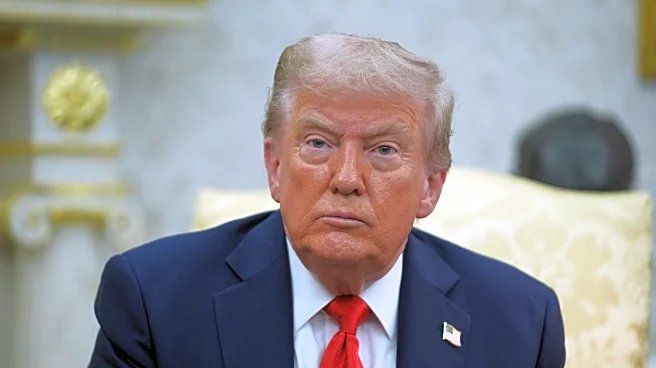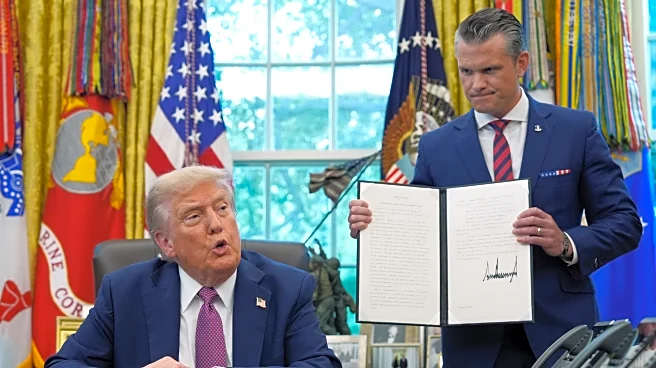What is the story about?
What's Happening?
President Trump has rebranded the U.S. Department of Defense as the 'Department of War,' a name not used since 1947. This symbolic change reflects a strategic shift towards military assertiveness and aligns with broader geopolitical tensions. The rebranding emphasizes offensive readiness and has sparked debate over its implications for U.S. military policy. While the change does not legally rename the department, it authorizes the use of 'Department of War' in official communications. The move has financial and logistical implications for the Pentagon, with costs potentially reaching billions of dollars for updating materials and communications.
Why It's Important?
The rebranding has significant implications for defense contractors and global markets. It signals a shift in military messaging that could influence investor sentiment and procurement strategies. Defense contractors may face both opportunities and challenges, as the rebranding aligns with initiatives like military modernization and increased defense spending. The move also raises geopolitical risks, as it may exacerbate tensions with other nations and impact international economic cooperation. The rebranding could affect U.S. alliances and trigger retaliatory measures from adversaries, adding to global uncertainty.
What's Next?
The rebranding may lead to changes in defense procurement strategies, with potential impacts on established defense contractors and emerging firms. The move could influence future defense budgets and spending priorities, particularly in areas like advanced technologies and military modernization. International reactions to the rebranding may shape U.S. foreign policy and diplomatic relations, as stakeholders reassess their strategies in response to the U.S.'s new military posture. The rebranding may also prompt domestic political debates on military policy and spending, as well as President Trump's broader foreign policy agenda.
AI Generated Content
Do you find this article useful?















